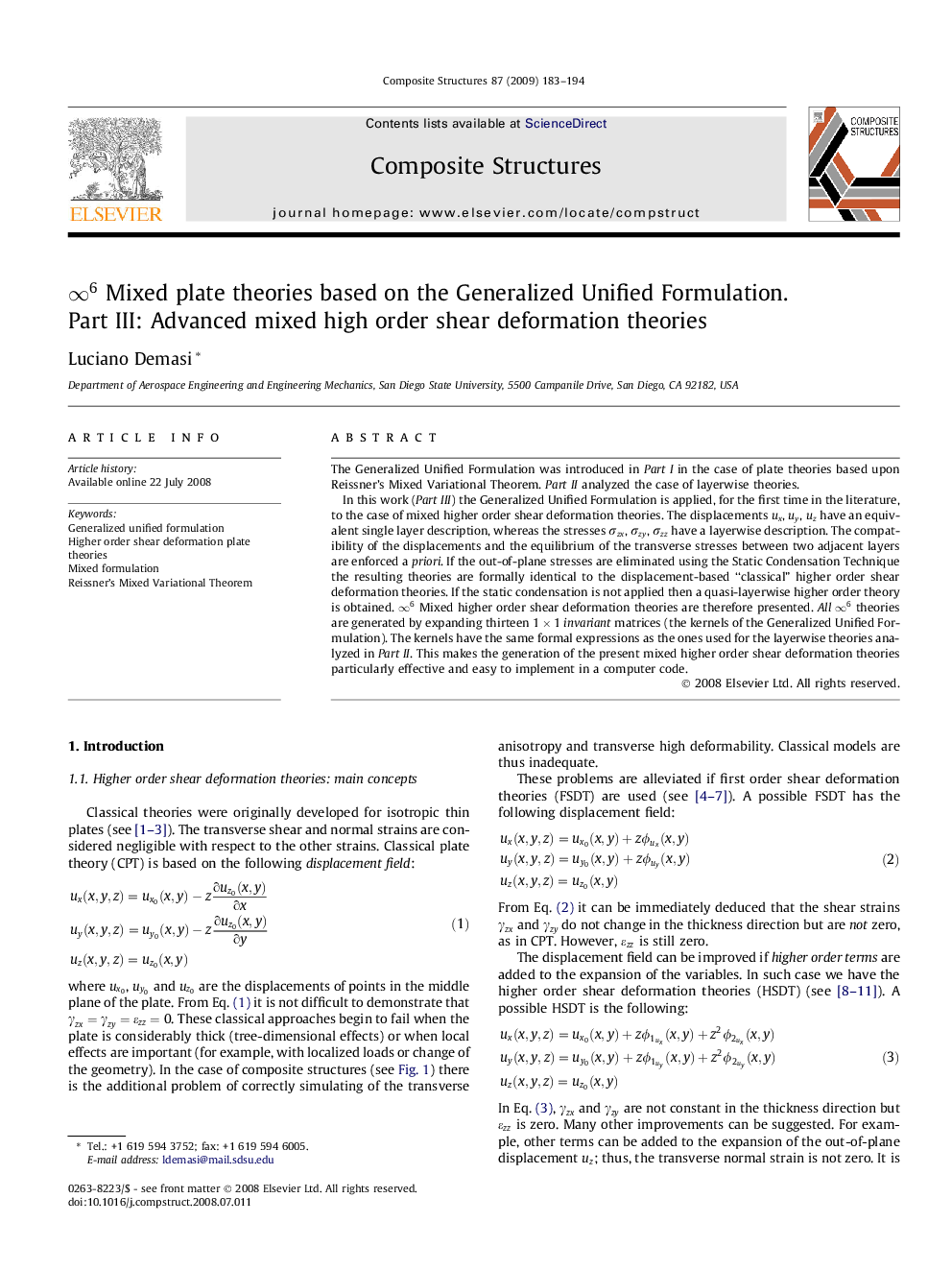| Article ID | Journal | Published Year | Pages | File Type |
|---|---|---|---|---|
| 253709 | Composite Structures | 2009 | 12 Pages |
The Generalized Unified Formulation was introduced in Part I in the case of plate theories based upon Reissner’s Mixed Variational Theorem. Part II analyzed the case of layerwise theories.In this work (Part III ) the Generalized Unified Formulation is applied, for the first time in the literature, to the case of mixed higher order shear deformation theories. The displacements uxux, uyuy, uzuz have an equivalent single layer description, whereas the stresses σzxσzx, σzyσzy, σzzσzz have a layerwise description. The compatibility of the displacements and the equilibrium of the transverse stresses between two adjacent layers are enforced a priori . If the out-of-plane stresses are eliminated using the Static Condensation Technique the resulting theories are formally identical to the displacement-based “classical” higher order shear deformation theories. If the static condensation is not applied then a quasi-layerwise higher order theory is obtained. ∞6∞6 Mixed higher order shear deformation theories are therefore presented. All ∞6∞6 theories are generated by expanding thirteen 1×11×1invariant matrices (the kernels of the Generalized Unified Formulation). The kernels have the same formal expressions as the ones used for the layerwise theories analyzed in Part II. This makes the generation of the present mixed higher order shear deformation theories particularly effective and easy to implement in a computer code.
